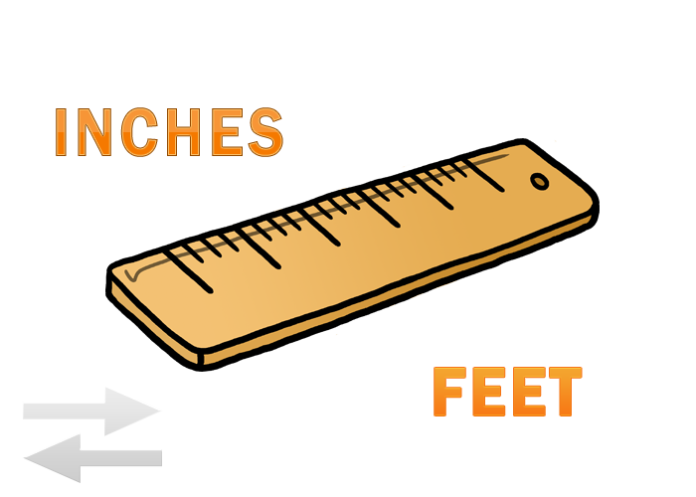Length Units Facts
Length units are important in measurement because they provide a standard way to quantify the size or distance of an object or phenomenon. They are used in a wide range of fields, including engineering, science, construction, and transportation. Length units also play a crucial role in international trade and commerce, as they provide a common language for describing the size of goods and materials. Without standardized units of length, it would be difficult to compare and measure quantities accurately and consistently, which would make it difficult to conduct business and conduct scientific research.
Length Unit Conversions :
Length units can be converted to each other using conversion factors. A conversion factor is a ratio of two equivalent units that can be used to convert a measurement from one unit to another. For example, the conversion factor between feet and inches is 12, so to convert a length measurement from feet to inches, you would multiply the measurement by 12.
To convert from one unit to another, you multiply the measurement by the conversion factor.
1 meter = 3.281 feet
1 foot = 0.3048 meters
1 mile = 1.609 kilometers
1 kilometer = 0.6214 miles
It’s important to note that these conversion factors are based on the international system of units (SI) and are considered the standard.
Additionally, there are conversion tools available online or in calculators that can help you convert between different units of length.
Feet In Imperial Unit
The unit “ft” stands for feet, which is a unit of measurement for length in the imperial system of measurement. It is commonly used in the United States and United Kingdom for measuring distance, height, and length of objects. It is also used in construction and real estate to measure the size of buildings and land.
The foot (ft) is an important unit of measurement in many fields, including:
- Construction and architecture: Feet are commonly used to measure the size of buildings, rooms, and other structures. It is also used in the design and layout of buildings, as well as in the calculation of materials and labor costs.
- Real estate: Feet are used to measure the size of land and buildings for sale or rent. This information is important for determining the value of a property.
- Surveying: Surveyors use feet to measure distances and elevations when creating maps and property descriptions.
- Sports: Feet are used to measure the distance of runs, jumps, and throws in track and field events.
- Transportation: Feet are used to measure the length of vehicles, such as cars, trucks, and buses, as well as the dimensions of shipping containers and cargo.
- Personal measurement: Feet are also used to measure personal height and shoe size.
Overall, the foot is an important unit of measurement for many aspects of everyday life and it is widely used in the United States, United Kingdom and other imperial measuring countries.
Inch In Imperial Unit
The unit “inch” (in) is a unit of measurement for length in the imperial system of measurement. It is commonly used in the United States and United Kingdom, and other imperial measuring countries, for measuring small distances and sizes of objects. Some examples of where inches are used include:
- Construction and architecture: Inches are commonly used to measure the size of small objects such as screws, nails, and other hardware. They are also used in the design and layout of buildings and other structures.
- Manufacturing and engineering: Inches are used to measure the size of parts and components in manufacturing and engineering. This allows for precise measurements and the creation of parts that fit together correctly.
- Personal measurement: Inches are used to measure personal height and waist size.
- Textile and Clothing: Inches are used in the measurement of fabrics, sewn garments and clothing sizes.
- Technology: Inches are used to measure the size of computer monitors, televisions, and other electronic devices, as well as the size of the screens of mobile devices.
Overall, inches are widely used in the United States, United Kingdom and other imperial measuring countries, and it is an important unit of measurement for many aspects of everyday life, such as construction, manufacturing, and personal measurement.






